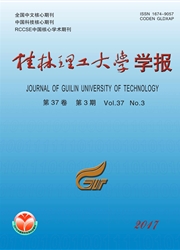

 中文摘要:
中文摘要:
为了与Kirchhoff叠前深度偏移速度分析进行比较,提出利用角度域共成像点道集(ADCIGs)的剩余校正和梯形网格辛Runge-Kutta射线追踪建立层析反演线性方程组。首先,通过常规叠前偏移速度分析获得矩形网格初始层速度模型,采用双平方根方程波场向下延拓偏移提取ADCIGs,并作剩余校正分析,计算旅行时残差作为方程组的右侧;采用偏移层位控制的梯形网格建立层速度模型,进行辛Runge-Kutta射线追踪,求取方程组左侧的偏导数矩阵;最后,运用LSQR并行算法、GPU-LU及递归LU分解算法求解方程组,得到速度修正量,更新初始层速度模型。此流程迭代多次直到ADCIGs同相轴拉平。该流程对青海野外地震数据的处理结果表明:该方法可行、有效。
 英文摘要:
英文摘要:
The linearized tomographic inversion equations are built by using the residual moveout ( RMO ) of angle domain common image gathers ( ADCIGs) and seismic ray tracing based on symplectic Runge-Kutta algo-rithm, compared with the Kirchhoff pre-stack depth migration velocity analysis.Firstly, conventional prestack migration velocity analysis estimates a rectangular grid of interval velocity model as an initial model, with which double square root wavefield downward continuation is adopted to extract ADCIGs.RMO analysis is exploited for producing traveltime perturbation as the right side of the equations.And then, trapezoid grids controlled by migrated reflectors are used in the parameterization of the initial velocity model , based on which symplectic Runge-Kutta ray tracing method is employed to compute the partial derivative matrix for the left side of the linear system of equations.Velocity perturbation is obtained by applying LSQR, GPU-LU or recursive LU algorithm to solve the linear system of equations for updating the initial velocity model.This processing sequence can be iter-ated several times until the ADCIGs are flattened.The processing method is carried out on Qinghai field data. The result indicates that the method is feasible and valid.
 同期刊论文项目
同期刊论文项目
 同项目期刊论文
同项目期刊论文
 期刊信息
期刊信息
